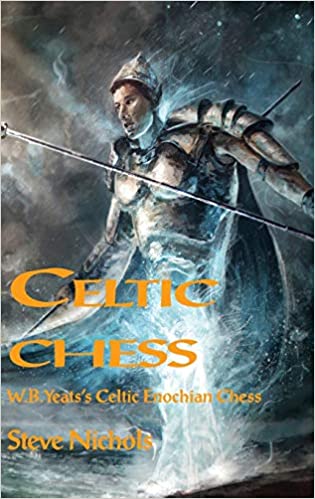
Tag Archives: Aleister Crowley & Thelema
Aleister Crowley MI5

Richard C McNeff
(Occult Fiction)
Aleister Crowley MI5
Richard McNeff
ISBN: 978-1-914153-02-0
£15.00+p&p / US $22.00+p&p
Click HERE for UK edition
Click HERE for USA & Elsewhere
Click HERE for the Kindle edition
An unsettling encounter with Aleister Crowley in a Soho pub launches Dylan Thomas on an adventure whose first stop is the opening of the Surrealist Exhibition on June 11, 1936. With the Welsh poet is his first editor Victor Neuburg, the Beast’s lapsed apprentice. In the bohemian fleshpots of Fitzrovia and Soho they connect with such luminaries of the period as Nina Hamnett, Augustus John, Tom Driberg, King Edward VIII and Wallis Simpson, as well as Crowley himself. Neuburg confronts the terrifying magick of his youth and something even more menacing — a Crowley orchestrated MI5 plot to avert the abdication. Aleister Crowley MI5 is an exhilarating work of fiction with highly researched fact at its core.
Richard McNeff on Aleister Crowley MI5 from ‘LASHTAL’
From the reviews:
‘McNeff’s book is so different from anything you usually find on a bookshelf that it should perhaps be a compulsory purchase.’— Independent on Sunday
‘Probably the finest modern novel featuring Aleister Crowley.’— Lashtal
‘Aleister Crowley as himself in all his occult and charismatic glory – a manipulative, overbearing, bizarre yet compelling character. Fiction could hardly have invented him: he is a gift of a character to any novelist & Richard McNeff has accepted him, unwrapped the parcel and given him his head.’ — Martin Booth, author of A Magick Life
‘A swaggering romp of a novel. Plot by Buchan; characters by Beardsley; setting Art Deco — difficult to better that.’ — Wormwood
‘A very clever idea, fleshed out with wit and style and an excellent sense of the times.’ — Silverstar
‘Full of fascinating nuggets…..Neuburg’s crisis of identity with AC is very well observed.’ — Snoo Wilson:
Richard C McNeff’s early acquaintance with John Symonds, Crowley’s literary executor and biographer, sparked an interest that developed into the 1977 cult short story ‘Sybarite among the Shadows’. This grew into Aleister Crowley MI5. He is also the author of With Barry Flanagan: Travels through Time and Spain (the Lilliput Press), a memoir which grew out of his experience of curating shows for the sculptor, the Brexit satire, The Dream of Boris, and has written for the Guardian, Fortean Times, and Boulevard Magenta. He lived and worked in Barcelona, the Basque Country, Ibiza and Baku. His current home is in London where he was born.
Celtic Chess
W.B. Yeats’s Celtic Enochian Chess
(Enochian Chess Series Vol. III)
Steve Nichols
Celtic Chess: W.B. Yeats’s Celtic Enochian Chess
Enochian Chess Series Vol.III
Steve Nichols
– over 100 illustrations many in colour.
ISBN: 978-1906958947
US$39.99 / UK£30.00
Click Here for Celtic Chess: W.B.Yeats’s Celtic Enochian Chess / UK
Click Here for Celtic Chess: W.B.Yeats’s Celtic Chess / USA & Elsewhere
Buy the Enochian Chess set (all three books) for only £70.00 free postage / UK
Buy the Enochian Chess set (all three books) for only $90.00 free postage USA
Elsewhere write for details
W.B. Yeats’s Celtic Enochian Chess
A black imitation-leather, gold unpublished notebook dated December 1898, shows us the Yeats-Gonne-Pollexfen team at work. Virginia Moore transcribes in 1954 this record of these three Celtic Twilight magicians exploring the four fabled “Cities,” of Falias, Murius, Findias, and Gorias – regions of the four elements, earth, water, air, and fire – under their respective Gods (the Dagda, Danu, Brigid, and Lugh) and High Druids.
On questioning the four Druids, Maud Gonne discovered she and Yeats had received the Initiation of the Cauldron (purification/water). Gonne also received the Initiation of the Stone (earth); whereas Yeats had attracted the powers of the Wand (air) signifying supernatural inspiration. Beyond these Elemental Initiations came that of the White Globe, governed by the elder-god Elathan (front cover). Yeats and Pollexfen went – or thought they went – with help of talismans to Falias, wherein a rough stone house George saw a skeleton of gold with diamond teeth. Next, they went to Murias (water), where a Druid showed them a bath full of indolent bathers. Trips continued to Findias (air), and Gorias (fire), where Pollexfen saw the lower part of the fire God Aengus (“passive form of Lug”).
This amazing sixteen board sub-elemental extension to the Golden Dawn Enochian Chess system was the culmination of such endeavours by W.B. Yeats and his circle. Full board designs, details of talismanic constructions, suggested pieces, and my account of Yeats’s magickal feud with McGregor Mathers, is published here – much for the first time.
Khemetic Enochian Chess
Featured
Hypermodern Magick
(Enochian Chess Series Vol. II)
Steve Nichols
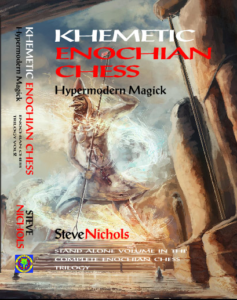
Khemetic Enochian Chess
Hypermodern Magick
Steve Nichols
Illustrations many in colour.
ISBN: 978-1-906958-86-2
US$39.99 / UK£30.00
Click Here for Khemetic Enochian Chess / USA & Elsewhere
Click Here for Khemetic Enochian Chess / UK
Buy the Enochian Chess set (all three books) for only £70.00 free postage / UK
Buy the Enochian Chess set (all three books) for only $90.00 free postage USA
Elsewhere, write for discount details and invoice
Khemetic Chess (Hypermodern Magick) is a stand-alone book that outlines my theory of magick, and sheds light on ‘active divinatory’ Enochian Chess. Exploring the 64 (8×8) paradigm, it looks at both historical and recent Enochian Chess variants. Aleister Crowley features prominently; and I look at strong Khemetic strands in Thelema such as the Crowning of Horus. It also encompasses Tantra, and Tsakli pieces (moveable shrines) for “No Self” Enochian Chess.
This book explains how 88 Ptolemaic emblemata gave birth to familiar Christianised tarot designs. These 88 divide into four groups of 22 Atous, and these combine with the Minor Arcanaii of the Four Winds, 56 divination cards for each of the 4 Elements or Chessboards. Four packs of 78 “Tarot of the Four Worlds.”
Khem, ancient Egypt, seems to be the fount of many magickal practices and survivals in diverse cultures. I trace some Khemetic influences on Tibetan Bonpo and Hinduism. Essential components and structure from Kabbalah also seem to begin with the Khemetic game of Zenet, and the Hymn to the Ten Bau of Amen-Ra rather than with such texts as Sepher Yetzirah and Zohar of the Late Medieval Period. Horus, Isis and the other Great Ones of Khem work better under governance of the Tetragrammaton (word with four letters) “AMEN” rather than under the arguably anti-Kemetic, Tetragrammaton YHVH.
Hypermodern Magick explains, continues and augments innovations that began with the literary modernist and psychological experimenter, WB Yeats and continued with political surrealist, Ithell Colquhoun, and Don Kraig (Modern Magick).
Steve Nichols’ fully featured Windows ENOCHIAN CHESS SOFTWARE for one to four players can be downloaded by using the coupon code instructions inside together with evidence of purchase. The PC software makes this advanced and complex game immediately playable. Steve Nichols was the first to publish Enochian Chess sets in 1982 with support from Israel Regardie and others. Steve has given many demonstrations, readings and lectures about the game over the decades.
THE ENOCHIAN CHESS SOFTWARE CAN BE DOWNLOADED FROM chaturanga.co
Rosicrucian Chess of The Golden Dawn
Enochian Chess Series Vol. I
Steve Nichols
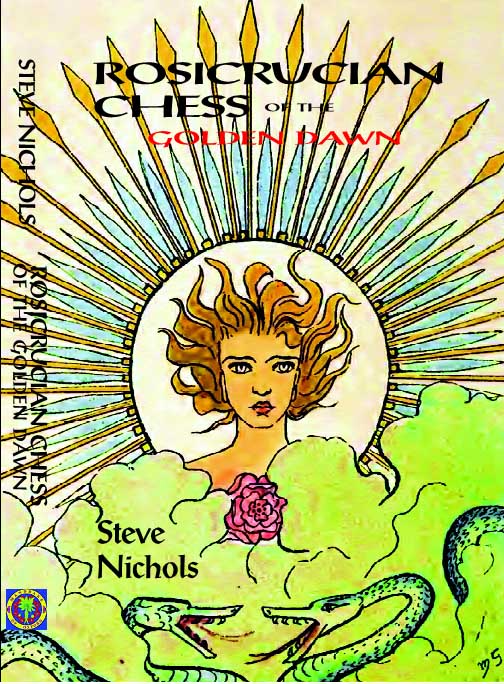
Originally it was only taught to Golden Dawn initiates who had risen to the rank of Zelator Adeptus Minor, and required a comprehensive knowledge of Tarot, Geomancy, Kabbalah, various magical formulae, the symbolism of the Candidate, the Ceremony of the Neophyte Grade, working knowledge of the art of Invocation and Banishing, Pentagram and Hexagram rituals, formation of Telesmatic Images, Sigils, and knowledge of the Enochian Tablets. Enochian Chess subsumes other Passive systems of divination such as tarot and astrology, and has powerful prophetic properties.
************************************************************************************************************
Steve Nichols’ fully featured Windows ENOCHIAN CHESS SOFTWARE for one to four players can be downloaded by using the coupon code instructions inside together with evidence of purchase. The PC software makes this advanced and complex game immediately playable.
THE ENOCHIAN CHESS SOFTWARE CAN BE DOWNLOADED FROM chaturanga.com
***********************************************************************************************************
Steve Nichols was the first to publish Enochian Chess sets in 1982 with support from Israel Regardie and others. Steve has given many demonstrations, readings and lectures about the game over the decades. This book includes new revelations about the Golden Dawn invention of Enochian Chess, with a particular spotlight on important Eastern occult sources previously hidden.
Pan’s Daughter
Featured
The Magical World of Rosaleen Norton
Revised and Greatly Expanded Edition
Nevill Drury

Pan’s Daughter
The Magical World of Rosaleen Norton
(Revised & Greatly Expanded Edition)
Nevill Drury
Format: Softcover/326 pp/48 illustrations.
ISBN: 978-1-906958-41-1
£22.99/US$32/AUD$36(+$8p&p)
Click Here for Pan’s Daughter / USA
Click Here for Pan’s Daughter / UK
Click Here for Pan’s Daughter / AU
During the 1950s and early 1960s the Sydney-based trance-artist and Pan-worshipper, Rosaleen Norton, was well known in Australia as ‘the Witch of Kings Cross’ and was frequently portrayed in the tabloid press as an evil ‘devil-worshipping’ figure from the red-light district. Norton attracted attention from both the public at large and also the local police for engaging in bizarre pagan sex-rituals with her lover, the poet Gavin Greenlees. Details of these activities would surface from time to time in the local courts when Norton was defending her metaphysical beliefs and seeking to defuse claims that her magical paintings and drawings were obscene. Norton was also associated with the scandal that eventually engulfed the professional career of renowned musical conductor, Sir Eugene Goossens who had arrived in Australia in 1947 and became a member of Norton’s magical coven six years later.
Norton dedicated her magical practice to the Great God Pan and to a lesser extent Hecate, Lilith and Lucifer. She was also intrigued by the visionary potential of Kundalini yoga, out-of-the-body trance exploration and Aleister Crowley’s Thelemic sex magick and combined all of these elements in her ritual activities.
Pan’s Daughter is the only biography of Rosaleen Norton and provides the most detailed and authoritative account of her magical beliefs and practices. First published in Britain by Mandrake in 1993, it is now reissued in a revised and expanded edition.
“Brilliantly researched…outrageous and inspiring”
Fiona Horne, author of Witch – A Personal Journey and Witch – A Magickal Year
“A fascinating study. Drury’s understanding of the occult and spiritual realms makes Norton’s art and life comprehensible” Tom Thompson, Sydney Morning Herald
Dr Nevill Drury (1 October 1947 – 15 October 2013) is best known for his publications on modern Western magic, shamanism and visionary art. For many years he worked in the Australian book industry as an editor and art book publisher and in 2008 he received his Ph.D from the University of Newcastle for a dissertation on the art and magical belifes of Rosaleen Norton.
Crowley
Featured
A Beginners Guide
John S. Moore & John Patrick Higgins
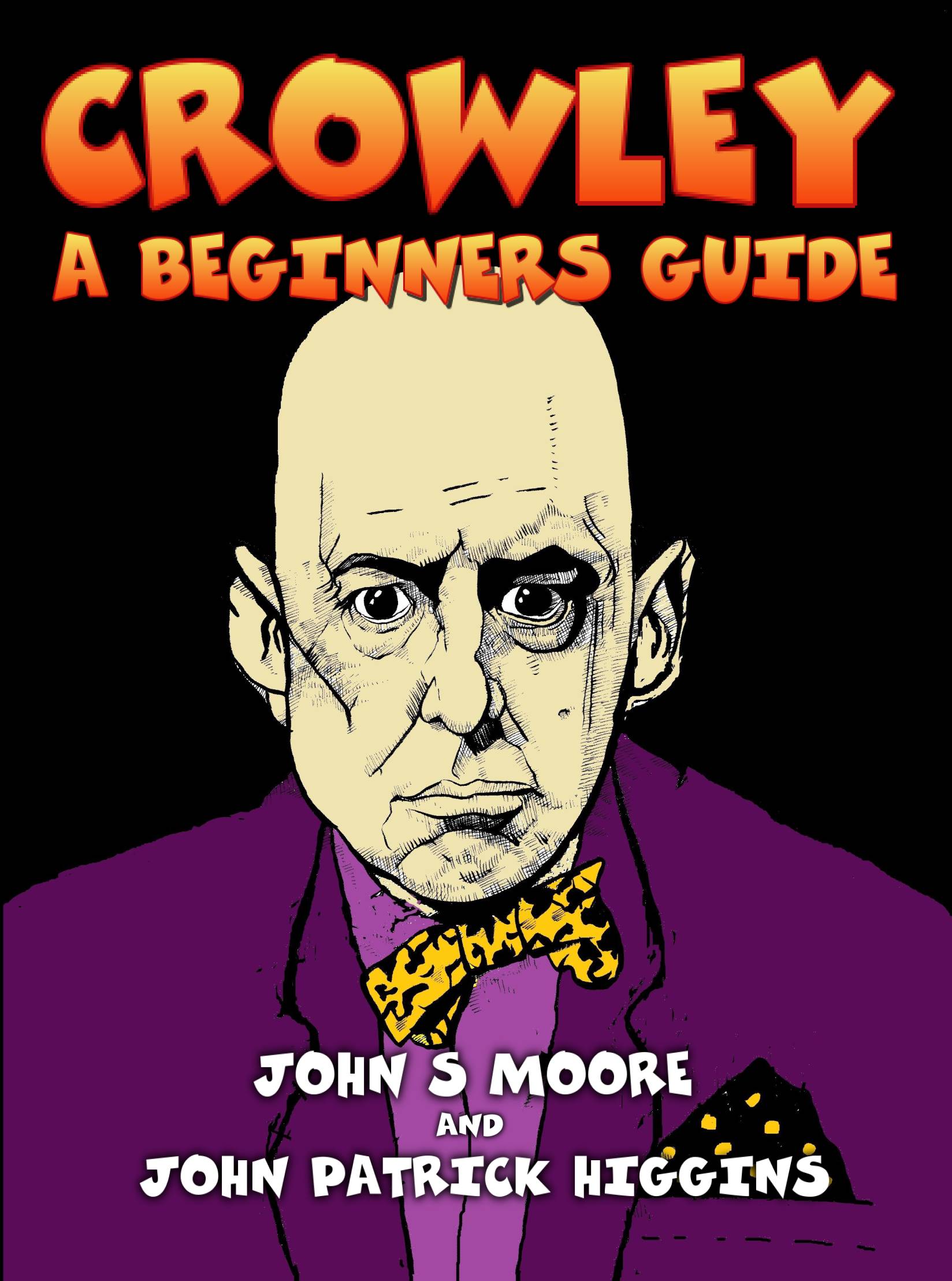
Crowley a beginners guide UK / £15.00
Crowley a beginners guide USA / US $22.00
Crowley, A Beginners Guide
John S. Moore & John Patrick Higgins
Format: Softcover/b/w Illustrated/154pp
ISBN: 978-1-906958-69-5
£15.00 /US $22.00
Subjects: Aleister Crowley/Thelema/Magick/Occult/Biography.
—–
“Do what thou wilt shall be the whole of the Law.”
Nearly seventy years after his death Aleister Crowley, the notorious Beast 666, is only just beginning to attract serious academic attention. Even so we would not expect to find him on any mainstream university courses; he is still too much associated with occultism. So, Crowley – A Beginners Guide is not your standard beginner’s guide.
“Let my servants be few & secret: they shall rule the many & the known.”
Readers may be surprised at the richness and complexity of his thought, as well as the extent of his influence. He needs background to be understood. Giving this opens fresh perspectives on much recent intellectual history.
Crowley – A Beginners Guide presents his main ideas in a straightforward and accessible format, with drawings and diagrams to place them in their historical context. It relates him to contemporary movements in art and scholarship. It describes his relationship to modernism and postmodernism, and his role in the counterculture of the sixties, as well as his continuing influence today. Interspersed are entertaining stories of his life and reputation.
Brilliantly illustrated by John Higgins, Crowley – A Beginners Guide, is a highly accessible guide to this fascinating, complex and controversial figure. It neither promotes nor condemns him, presenting hostile as well as favourable views of his character and achievement.
John S Moore is a freelance writer and independent scholar living in London. He is the author of Aleister Crowley: A Modern Master (Mandrake of Oxford, 2009) and Nietzsche – An Interpretation, (AuthorsOnline Ltd, 2011) and has written on Schopenhauer, Wittgenstein and Edward Bulwer-Lytton among others. More information at www.johnsmoore.co.uk
John Patrick Higgins is a writer and illustrator. He is the author of The Narwhal and Other Stories www.amazon.co.uk/Narwhal-other-stories-Patrick-Higgins ebook/dp/B007N6KJW8
He writes art criticism for various magazines and is Creative Director of Shot Glass Theatre Company www.culturenorthernireland.org/reviews/performing-arts/shot-glass. See also www.facebook.com
He lives in Belfast, which he continues to find extraordinary.
Read a review of Crowley A Beginners Guide from Magonia Review of Books pelicanist.blogspot.co.uk/2016/04/crowley-for-beginners.html
Elmer Crowley
Featured
A Katabasic Nekyia
Tom Bradley
(illustrated by David Aronson & Nick Patterson)
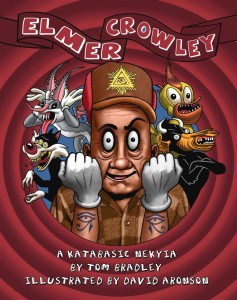
Elmer Crowley / USA & AUS / $22.00
Elmer Crowley
A Katabasic Nekyia
Tom Bradley, David Aronson, Nick Patterson.
Format: Softcover/132 pp – illustrated – many in colour.
ISBN: 978-1-906958-55-8
US $22.00 / UK £15.00
Subjects: Aleister Crowley & Thelema/picaresque graphic novel.
In Elmer Crowley, Tom Bradley dismantles and re-welds biography, novel, creative non-fiction and metaphysical treatise into a bizarre satire. Aleister Crowley, alias ‘The Anti-Christ’, has bungled his karma and ended up the Looney Tune character Elmer Fudd.
The whole outlandish premise plays out as a mockery of occultism’s darkest delusions. The subtitle means a descent into a ritual by which ghosts are invoked to divine the future.
The narrator is the incarnated ghost of Crowley. He and Hitler are sometimes compared for the similarities of their occult-based belief in “Do As Thou Wilt” as justification for turning hapless followers into “stringless marionettes.” Crowley’s opening words refer to Hitler as his “magickal child,” setting the moral tone for what follows. Numerous themes branch out from this initial assertion with key scenes wickedly illustrated, adding ‘graphic novel’ as yet another misleading describer of Bradley’s furcated katabasis.
Crowley, Fudd, Hitler, Buddha, Yeats, Heliopolitan hierophants, the Goddess Baubo, assorted “Nilotic dream despots”, a carrot-eating Madame Blavatsky, Bugs Bunny, Daffy Duck and their Warner Brothers producer, Leon Schlesinger bounce and boing their way across human history. These are the launch points for Bradley’s inquiries into questions of meta-ethics and truth against a background of “Esoteric Hitlerists.”
Crowley’s tragic flaw is his fixed idea that “magick is done to the strains of incantatory monotony, not self-conscious art.” This translates into control of non-questioning followers to serve his ends, noting with admiration that the A-bomb is “the most magickal blackjack to come swinging along since the sage Aurva armed his king with the fire missile in the Vishnu Purana.”
Crowley and Fudd share a speech defect: the inability to pronounce the R sound (“that wascal wabbit”). “Many fine magi,” Crowley claims, “perhaps even a slim majority… are poorly spoken.” That would include (besides Buddha and Hitler’s doctor) Leon Schlesinger, the money behind the Warner Brothers cartoons. Crowley and Schlesinger meet at a Hollywood orgy over a shared pederastic interest in a youth who also has a speech impediment. Whether Elmer Fudd’s “babbling weakness” on screen is a gibe at Crowley’s lisp is something the reader will have to determine. Either way, reincarnation as a lisping Looney is not an inapt destiny for the Anti-Christ who infamously wrote in his Confessions, “direct injury [is] the proper conjuration to call up gratitude.”
Doing as one wills, central to Crowley’s philosophy of Thelema, easily leads to a perverted will to power. Crowley realises after it’s too late that his magick act stinks. “Is ‘wayward sorcery’ a damnation offence as [Madame Blavatsky] proclaimed?” All you need is love, not will. As Bradley has stated elsewhere, “The universe runs on a Theosophical rather than a Thelemic dispensation.”
Elmer Crowley may confound those who want their words to move through books like soldiers in formation and come to a uniform halt at the end. But readers willing to navigate outside the usual throughways will find themselves in the higher vistas of this rich and complex tome, slim enough for the slow and multiple readings it deserves. – John-Ivan Palmer
REVIEWS:
Reading Elmer Crowley is like reading Crowley’s inner dialogue at 3am, after an intensive journey into his own inner abyss. It is, therefore, a magickal working that Crowley himself would be proud of.
– Gwendolyn von Taunton, author of Northern Traditions
Of Aleister Crowley’s many fictionalizations, this novel gets best into his head. Erudite, prideful, lascivious, funniest man of his time, and the mightiest spiritual spelunker–he speaks and shouts from these pages as clearly as he did in his Autohagiography, which is paradoxical, given the irreal setting.
– Barry Katz, HTMLGIANT
This book…captures the feel of Crowley with his bawdy, politically incorrect irreverence, his arrogance and his committed magickal spirituality and awareness.
– Charlotte Rogers, author of P is for Prostitute
The voice is dead perfect…I can’t imagine a hip Thelemite NOT having this book in her library.
– Don Webb, author of Through Dark Angles, former High Priest, Temple of Set
This self-described “picaresque graphic novel” reads like an account of Crowley’s death-bed fever dream or an afterlife bardo journey gone terribly wrong, wherein the fifty-eight Wrathful Deities take on the aspect of warped and sinister versions of Looney Toons archetypes…. the result reads like a trippy, post-mortem, long-lost epilogue to The Confessions.
– Richard Kaczynski, author of Perdurbo: The Life of Aleister Crowley
Nightshades
Featured
A Tourist Guide to the Nightside
Jan Fries

Nightshades
A Tourist Guide to the Nightside
Jan Fries
Format: Hardback – Cased Matt Laminate A4 216 pp.
ISBN: 978-1-906958-45-9
£24/US$40
Subjects: Aleister Crowley & Thelema/Kenneth Grant/Typhonian Magick/Occult Art.
“Nightshades is the record of one remarkable magician’s exploration of the inverse regions of the Tree of Life. Aleister Crowley’s Liber 231 provides the map and Kenneth Grant’s Nightside of Eden a travelogue. “Liber 231, apparently started life as a text within the Hermetic Order of the Golden Dawn, as an exercise to develop astral and trance abilities or perhaps in other more elaborate rites. The nightside aspect requires some care and alertness in case of accident. The correct attitude is said to be one of self or ego-less witness. Or maybe it’s just one needs the use of an all-embracing rather than a limited kind of identity and self-identification” (mmm)
“The Nightside is always with us. It’s so much older than the Dayside. Before the light began to shine, the night was there. Some assume that we are dealing with a simple polarity. On one hand the radiant world of colours and forms, more or less thinkable, reasonable and meaningful. Like the pretty picture of the Tree of Life it has its scenic cites, its hotels, restaurants, shopping opportunities and highways in between.
On the other hand the chaotic world of uncertain and incomprehensible mysteries. Both of them connected by the voidness that makes them possible. It looks symmetrical. But when you reach the Nightside it doesn’t work like that. The Nightside is not simply a reflection of the dayside with a few confusing and spooky bits thrown in.
The Dayside is a tiny island of experience in a huge ocean, the Nightside, full of currents, island chains and continents of the possible and impossible. All and Nothing are present everywhere. Our island is not the opposite of the world-ocean, it is simply a tiny and comprehensible part of it.” (jf)
Jan Fries Nightshades comprises 72 intense drawings prefaced by an explanatory essay detailing the background and genesis of this ultimate magical adventure.
Sexual Magick
Featured
Secrets of Sexual Gnosis in Western Magick
Katon Shual
(with Mogg Morgan)
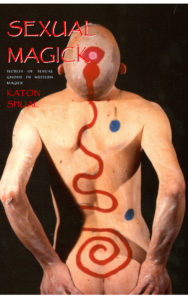
Sexual Magick
Secrets of Sexual Gnosis in Western Magick
Katon Shual
Format: Softcover
ISBN: 978-1-906958-48-0
£15.00 / US $24.00 186pp
Subjects: Sexual Magick/Aleister Crowley/Thelema/Tantra
Sexual Magick / UK / £15.00
Click here for Kindle USA Edition
Sexuality is one of the keys to magick. In this book, first published in 1988, Katon Shual presents some of the secrets of sexual gnosis within western magick – a system that is often misunderstood. The book begins with a look at the revival of sexual magick in the early part of the 20th century, especially within the ranks of the Hermetic Order of the Golden Dawn and some of the post Golden Dawn magical groups such as Aleister Crowley’s Thelemic cult. The book goes on the look at the modern fusion of western Hermetic and eastern Tantrik sexual gnosticism. On the way it discusses in a progressive manner gay, straight and solitary sexual magick. The book goes on to introduce the ancient deity Seth as an archetype of the sexual magician. The book includes an unpublished grimoire of sexual magick, as well as several other unusual sources, including an authoritative exploration of the chakra system, a magical approach to Kundalini and an introduction to the relationship between the sacred sexuality and the external landscape.
‘Makes the subject of sexual magick accessible and lucid and above all relevant to contemporary magical practice’
– Phil Hine reviewing in Talking Stick magazine
body magick cover art and insides by Michael R Goss
I, Crowley
Snoo Wilson
(Occult Fiction)
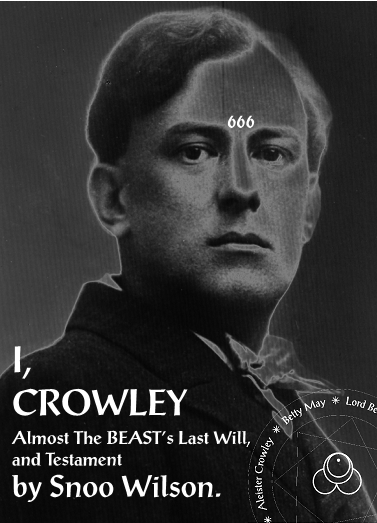
I, Crowley
Snoo Wilson
ISBN: 9781869928476
£15.00 / US$24.00
Click HERE for the UK edition
Click HERE for the USA & AUS
–
‘I never killed Raoul Loveday with a magical spell.’
Aleister Crowley, otherwise known as the Beast 666, shared membership of the Golden Dawn with W.B. Yeats, and publishers with D.H. Lawrence. Now in a beyond-the-grave autobiography, he recounts his own vocation, his practise of sex magic, and his bruising encounters with his contemporaries.
The great magus, whose own world-conquering creed, The Book of the Law, was written in Cairo in 1904, was according to him, no murderer, but a prophet and practitioner of all kinds of sexual freedom and new magical systems.
‘I shall continue to protest my innocence as long as I have a hole in my bottom.’
The Wickedest Man in the World? Or Post-Christian Messiah? Read this book and judge for yourself.
‘intriguing and sordidly entertaining’ – Gay Times
‘Brilliant . . . the Great Beast explaining himself in lapel-grabbing prose:’
– Simon Callow, Sunday Telegraph
‘Excellent . . . perverse, funny and at times as inexplicably moving as its subject. Recommended’ – Fortean Times
‘Probably the most fun you’ll have with a British novel all year’ – The Edge
…thanks to Snoo for a great book.
Thoroughly enjoyed it. Made me laugh and cry. Excellent.’ – Sparky
‘. . . really good fun. It’s not very kind to old Crow, and the language is a bit more vulgar than required (or than he would have used), but on the other hand. . . it does produce a charming caricature of Ye Great Beast that serves to perpetuate the myth. …Dear 666 would have felt flattered… What I liked about the book, apart from its jokes and the invaluable occult illustrations, is the contrast between Crowley as a human being (and egomaniac) and the Master Therion, the perfect ego-less adept he would have liked to be . . . It’s the difference between a Thelemite and a follower of Crowleyanity. Symonds’ Great Beast was almost totally obsessed with the Demon Crowley, Wilson’s novel is better balanced, it mixes the ego tripper with the Logos of the Aeon. This produces some confusion, and maybe this confusion is close to the conflicts that the real AC experienced. I suspect that he often got muddles up as to who was who in him and who cares, and put on his Great Magus Hat whenever his ego felt threatened and misunderstood. Considering that so many people are involved in the dull cult of Crowleyanity, and spend their time trying to be like the guru or wasting money collecting the master’s underpants, a critical treatment of the person Crowley, such as you dared to inflict on the long-suffering public, is an excellent and much need magickal gesture.’ – Jan Fries
Aleister Crowley,
Thelemic Magick
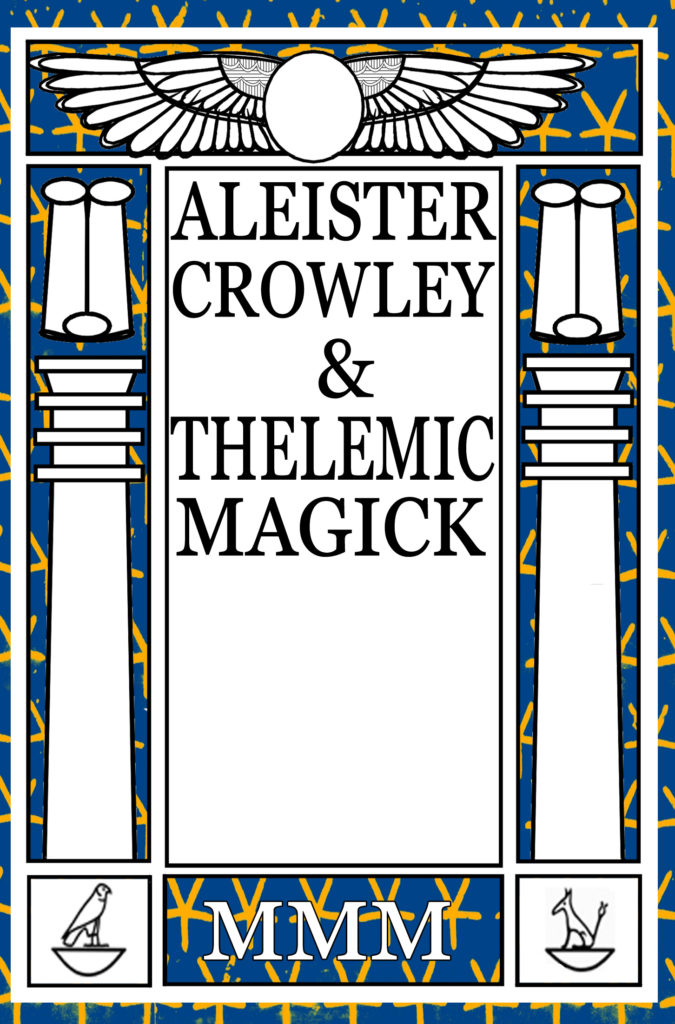
Revised Edition
12 October 2022
(was Proceedings of the Oxford Golden Dawn Occult Society Thelemic Symposium)
Mogg Morgan
Format: Softcover
ISBN: 186992844X
£15.00/US$22.00
Subjects: Aleister Crowley & Thelema/Magick/Enochian Magick.
Hell of a Guru
Do what thou wilt shall be the whole of the law
Aleister Crowley may have died in 1947, but his influence is still very much felt by the magician of the new aeon. The CD soundtrack The Beast Speaks sold 8000 copies since its release in 1993, and the paperback edition of Crowley’s Confessions was number two in Virgin Megastores top ten books. The modern magician is no slavish follower or member of some mind bending cult. Crowley’s watch word was Thelema (The Crowleian pronunciation is Theh-LEE-mah, the accent being on the vowel of the second syllable, Greek speakers say the accent should be on the vowel of the first syllable for it to be pronounced right….ThEH-lee-mah) – which means [free] Will. Those who choose to follow this magical path aim to de-condition themselves, to develop independence of spirit and ultimately to become their very own self. One of the many attractions of Crowley’s type of magick, was this advice to follow one’s own way and create your own life path. You don’t need a priest or a judge to tell you how to act – work it out for yourself.
As part of the process of developing self-knowledge, Crowley advocated the practice of magick. This he defined as ‘the science and art of causing change in conformity with will.’
Thelemic magick can be either a system or an approach to the magick of any tradition, e.g. Hermetic, Ceremonial, even Witchcraft. In Thelema, as in all other styles of magick, there are at least two different types of magical entity – the ‘Masonic’ and the ‘Rosicrucian’. The Masonic tends to be organized into definite hierarchical orders; whereas the Rosicrucian is more freeform, often a mere network of peers. The authors of what follows reflect many of these different styles of Thelemic magick and reading what they say is perhaps the best way to grasp what Thelemic magick is all about.
As part of the process of developing self knowledge, Crowley advocated the practice of Magick. This he defined as ‘the science and art of causing change in conformity with will.’ The history of magick is the history of human beings. Many of the things that are now labelled ‘culture’ began as experiments in ritual and magick viz. drama, music, art, dance, philosophy and poetry etc., etc. Magick has played a role in many key moments of our history, for example during the fourteenth century, it was the philosophy of the Renaissance. In our own time, many modern art movements have been driven by magical ideas, for instance, the first abstract painting was made by the Theosophist Kandinsky. Magick is a valuable and reputable activity to undertake.
Magical Dilemma of Victor Neuburg
Jean Overton Fuller
(Magical Biography)

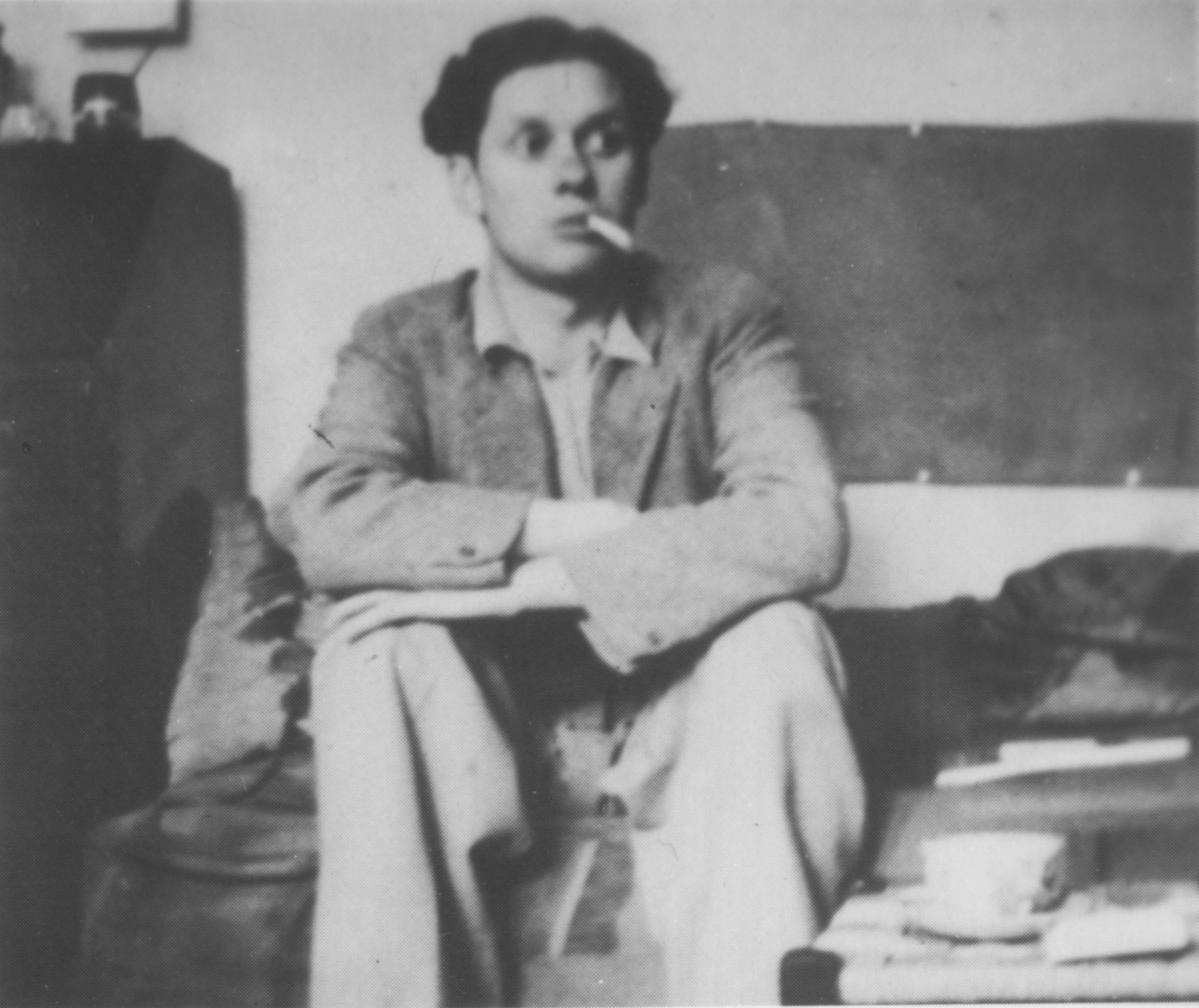 The Magical Dilemma of Victor Neuburg
The Magical Dilemma of Victor Neuburg
Jean Overton Fuller
Format: Softcover
ISBN:
£15.00 / US$24.00
Subjects: Biography/Aleister Crowley/Thelema/Magick.
The Magical Dilemma of Victor Neuburg is really two books in one:
The record of Victor Neuburg’s extraordinary journey to magical enlightenment. And the story of Aleister Crowley, the magus who summoned Neuburg to join
him in his quest.
‘The book opens with the author’s entry into the group of young poets including Dylan Thomas and Pamela Hansford Johnson. They gather around Victor Newburg in 1935 when he is the poetry editor of the Sunday Referee. Gradually the author becomes aware of his strange and sinister past, in which Neuburg was associated in magick with Aleister Crowley.
Contents: Beginnings / Mystic of the Agnostic Journal / Crowley and the Golden Dawn / Initiation / Magical Retirement / Equinox and Algeria / Rites of Eleusis / Triumph of Pan / Desert / Triangles / Moon Above the Tower / Templars and the Tradition of Sheikh El Djebel / Paris Working / The Sanctuary / Arcanum Arcanorum / Dylan Thomas
‘Those interested in Western occult history will welcome this revised and expanded edition of an important work first published in 1965.
Overton Fuller’s biography of Neuburg paints an intimate portrait of this complex character who was as much mystic as poet. A prominent figure in London’s literary bohemia in the 1930s, Neuburg encouraged such writers as Dylan Thomas, Pamela Hansford Johnson, Hugo Manning and many others, including Overton Fuller.
In his earlier days, Neuburg had been a disciple, magical partner and possibly even lover of Aleister Crowley during a period of ground-breaking magical experiments.
‘Vicky encouraged me as no one else has done,’ Dylan Thomas declared on hearing of Neuburg’s death. ‘He possessed many kinds of genius, and not the least was his genius for drawing to himself, by his wisdom, graveness, great humour and innocence, a feeling of trust and love, that won’t ever be forgotten.’ ‘ . . . there was a whiff of sulphur abroad, and all of us would have liked to know the truth of the Aleister Crowley’s legends, the truth of the witch-like baroness called Cremers, the abandonment of Neuburg in the desert.’
– Pamela Hansford Johnson
‘No dry biography this but an illuminating and compelling account of a multi-faceted personality who lived during an exciting period of occult and literary history. An absolute must-have!’
– (ME) In Prediction Magazine November 2005
—————————–
To mark the centenary of Dylan Thomas, here’s an extract from JOF’s book that narrates her first meeting with the soon-to-be-famous poet:
“We agreed to Zoists”: Dylan Thomas & the Occultist Victor Neuburg (Aleister Crowley’s lover & collaborator)
“We agreed to Zoists.
Runia wanted us to have badges, ‘so that one Zoist can recognize another, if you meet outside, or if we have provincial centres.’
There was a murmur of dissent. Some of us felt this thing was getting inflated. And we didn’t want badges. We weren’t boy scouts; just a few people who wanted to come here and sit and talk to each other on Saturday evenings.
‘All right, no badges,’ she said. ‘But it is agreed we have a name?’
It was agreed but there was no enthusiasm for the name, our feeling being for the informal. Before we left Runia made us cups of tea.
When eventually we broke up, and I stood again in the road outside, I felt I could tell my mother I had been among distinguished people. But the truth was I felt something else as well. I felt I had been in ancient Egypt and for this feeling I could find no explanation.
Not all of those who had been present on the first evening returned the following Saturday, but as I attended every week I began to know the regulars. Arriving soon after 8 (dinner at the hotel where my mother and I lived, was at 7, so it was a rush), I always found a certain number of people there already, though there was usually some time to wait until Vicky and Runia came from the inner room. It was in this waiting time that I had to find my feet, as it were among the other young ones. Nobody was ever introduced at Vicky’s. One just found out for oneself. I did not find the young men easy although they made efforts to draw me into the circle, for they assumed an acquaintance with modern poetry and political authors greater than I possessed; I could not always follow their allusions, and I had the feeling they all participated in a form of culture slightly strange to me. I was therefore grateful when a good looking young man, quiet mannered and of a more ordinarily civilized demeanour, settled himself beside me and asked, simply, ‘How did you come to Vicky’s?’
I told him about the circular letter I had received. He knew Geoffrey Lloyd had sent some out and asked, ‘What do you do when you’re not writing poems for Vicky? What’s your background, so to speak?’
I told him I had been on the stage since I was seventeen.
He said ‘Fancy our having an actress among us!’
‘What’s your name?’ I asked him.
‘William Thomas’, was what I first thought he said, but then he added, ‘It’s a special Welsh name.’
There could be nothing very special about William, and I puckered my brows.
‘You’ll never have heard it before,’ he said. ‘Nobody in England ever has. It should really be pronounced Wullam, in Welsh.’ Or was he saying ‘Dullan’?
‘It’s a special Welsh name,’ he repeated. ‘I shall have to spell it for you. D-Y-L-A-N. In Wales, it’s pronounced Dullan. But I’d been corresponding with Vicky for some time before I came to London, and when I arrived I found he had been calling me Dillan, in his mind. I thought if Vicky didn’t know how to pronounce it nobody in England would, so I decided to take it as the standard English pronunciation of my name. Otherwise I’d spend all my time telling people it was Dull and not Dill, and I think perhaps Dillan sounds more elegant than Dullan. Only Idris objects and thinks it’s frightfully fancy! Because he’s Welsh, too, and he knows! but now I’m getting even Idris trained to call me Dillan, though it’s under protest!’
‘What part of Wales do you come from?’ I said.
‘Oh, I only come from a small town. Swansea.’
Whereas I had previously felt myself to be the most naive member of a group otherwise composed of sophisticated, bohemian intellectuals, I now felt I had, vis-à-vis Dylan Thomas, at any rate, an advantage in being a Londoner. ‘I should have thought Swansea was a large town,’ I said. ‘I was near there all last summer. If you had been to the theatre at Porthcawl you would have seen me on the stage!’
‘No, I’m afraid I didn’t’ he said. ‘What a pity!’
Giving the conversation a turn he did not expect, I said, ‘Have you ever been down a mine?’
‘No.’
‘I have!’ I explained triumphantly. ‘Near Crumlin. I once played a January date in the Rhondda. Or more exactly the Ebbw Vale.’ I told him how I had persuaded the men at a pit to take me down the shaft, and how, having arrived at the bottom, I was given a lamp to hold and escorted along a passage which had been hewed through the coal to a point where it became so low that one would have had to proceed on hands and knees. I was shown a fault seam, which I felt with my fingers.
‘You have seen something in Wales which I haven’t!’ said Dylan. He explained that his home was some distance from the mining regions. He described the part of Swansea where he lived, with a detail I cannot now recall, except that it sounded salubrious and agreeable. His father was Senior English Master at the Grammar School. ‘Living where I do one doesn’t really see anything of all that,’ he said, with reference to my allusion to the coal mining (and depressed) areas. ‘Idris comes from the Rhondda,’1 he said. ‘I haven’t been into those areas.’ As though he had been slightly shamed by my adventure, he added, ‘Perhaps I ought to have done.’
‘It’s because you live there that you wouldn’t think of it,’ I said. ‘When one is touring one feels one must see everything in case one never comes again. When I was sixteen, my mother and I made a tour of Italy, Pisa, Rome, Naples, Capri, and back through Perugia, Florence and Milan. We felt we had to go into everything, even the smallest church we passed on any street. We realized we had never “done” London half as thoroughly because we took it for granted.’
I have no ‘outrageous’ sayings of Dylan Thomas to record. His conversation with me was perfectly drawing-room and unexceptional. I remember him as a polite young man. Friendly, but not at all presuming.
He told me the origins of the circle of which I now formed part. ‘First one and then another of us found our way to Vicky’s through entering into correspondence with him or something like that, and so a circle grew up around Vicky. We’re all very fond of Vicky.’ He explained that, ‘always reading each other’s names in print we began to wonder what the ones whom we hadn’t seen were like.’ So they had had the idea ‘of sending out circulars to everybody who was a contributor. He thought it had brought in some interesting people. ‘Well, it has brought you!’ Perhaps one could name some kind of a regular thing of it. ‘The only thing I don’t like is the name Zoists!’ he said.
I laughed and said, ‘It does sound a bit like protozoa, zoophytes and zoids!’
Dylan pulled a funny face.
‘We’re always called “Vicky’s children”,’ said Dylan. ‘It’s a bit sentimental, but I don’t think we shall ever be called anything else.’
It had been at the back of my mind while he was speaking that his name, as he had spelled it out, was one which I had read in the Sunday Referee in a context more important than that of the weekly prizes. I had not taken the paper regularly before I joined the circle, or I would have known the whole build-up. I said, ‘Aren’t you the winner of a big prize? I believe you’re one of the distinguished people here!’
‘It was through Vicky and the Sunday Referee that a book of my poems has been published,’ he said. He explained that a prize was offered twice yearly, part of which consisted in the publication of the winner’s poems in book form. ‘The first was awarded to Pamela Hansford Johnson. She isn’t here tonight. I was given the second of them.’ He said that Vicky had helped him pick out what he thought were the best of the poems he had written.
‘What’s it called?’
‘Just 18 Poems. It was published just before Christmas, and I think it’s doing quite well.’ He added, ‘I’m very grateful to Vicky. It’s a big thing for me. One’s first book is the most difficult to get published. Everyone says so. Now that I have one book published, it should be easier to get the next accepted, perhaps by an ordinary firm.’
My sentiment for Vicky was already so strong that I was slightly shocked.
Dylan Thomas saw it. ‘Vicky doesn’t expect us to stay with him!’ he said. ‘This is a nursery school from which we are expected to go out into the world. When we can get published elsewhere nobody is more pleased than Vicky!’
Just then the moment for which we had been waiting arrived. The door from the inner part of the house opened and our hosts came out to join us.
Vicky came straight up to Dylan and me. I did not know which of us the distinction was meant for but it gave me joy. He stood by my chair, looking down on us beamingly, and said to Dylan, ‘You’re entertaining this little lady?’
Dylan said, ‘I’ve been telling her something of the history of the Poet’s Corner.’
*********************************
Laugharne,
Carmarthenshire,
Wales
19 June 1940
Dear Miss Fuller
I haven’t heard anything from Vicky and Runia for years, until about a fortnight ago.
Then Pamela Johnson wrote to tell me that Vicky had just died. I was very grieved to hear it; he was a sweet, wise man. Runia’s address is 84, Boundary Road, NW8. At least, I suppose she is still there. I wrote her a letter, but I haven’t had a reply yet; probably she’s too sad to write.
Yours sincerely
Dylan Thomas
#occult #literarymodernism #aleistercrowley #victorneuberg #poetry #magick #mandrakeofoxford
Books of The Beast
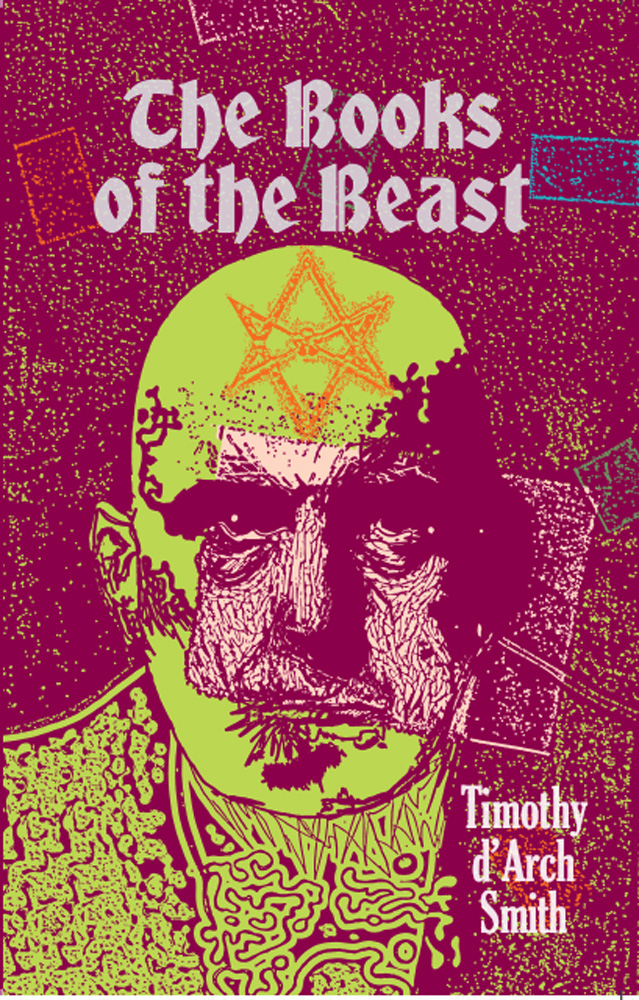
Timothy d’Arch Smith
The Books of The Beast
Timothy d’Arch Smith
Format: Softcover
ISBN 9781869928179
£15.00 / US$22.00
Subjects: Aleister Crowley/Crowleyiana/Publishing History/Antiquarian Books/Occult.
Click HERE for Kindle USA edition
Click HERE for Kindle UK edition
Timothy d’Arch Smith’s The Books of the Beast is a compelling collection of essays that delves into the intricate world of occult literature, with a particular focus on Aleister Crowley and his contemporaries. Originally published in 1987 and later expanded in a 2010 edition, this work offers both bibliographic detail and cultural insight.
Overview
D’Arch Smith, an esteemed bibliographer and antiquarian bookseller, explores the symbolic significance Crowley attributed to every aspect of his publications—from colour and paper type to pricing. The book serves as an authoritative guide to Crowley’s magical first editions, providing context and commentary that illuminate their esoteric meanings.
Contents
Beyond Crowley, the essays examine figures such as:
-
Montague Summers: A Roman Catholic priest and demonologist, whose private indulgences contrasted with his public condemnations of the occult.
-
Ralph Chubb: A poet and artist who attempted to establish a new religion centred around a boy-god, reflecting his controversial personal beliefs.
-
Florence Farr: A prominent member of the Hermetic Order of the Golden Dawn, known for her associations with literary figures like W.B. Yeats and George Bernard Shaw.
-
R.A. Caton: Publisher of the Fortune Press, noted for his interest in homoerotic literature.
The book also discusses the British Library’s Private Case collection and includes an autobiographical epilogue detailing d’Arch Smith’s experiences in the London occult scene of the 1950s and 1960s, featuring encounters with individuals like Michael Houghton of the Atlantis Bookshop, biographer Jean Overton Fuller, and musician Jimmy Page.
Tone and Style
The essays are noted for their scholarly rigour combined with a gentle humour, making complex and potentially controversial topics accessible and engaging. D’Arch Smith’s firsthand experiences and extensive research provide a unique perspective on the interplay between literature, sexuality, and the occult.
Editions and Availability
The 2010 edition, published by Mandrake, includes an additional chapter on Crowley and is available in both paperback and Kindle formats. For those interested in the intersections of esoterica, literature, and cultural history, this book offers a rich and nuanced exploration.
REVIEWS
”…one could hardly wish for a more stimulating guide…’‘ –The London Magazine
”One of the more immediately striking things about the book is its gentle humour.”– Time Out
The Books of The Beast. Timothy d’Arch Smith. (Mandrake).
The author of this collection of studies of twentieth-century occultists is a well-known antiquarian bookseller, bibliographer and reviewer with a life-long interest in esoterica and erotica. This collection has a bibliography of Crowley that gives the book its title and biographies of the Roman Catholic priest, playwright, schoolmaster, collector of homoerotic pornography, demonologist and closet Satanist, Montague Summers, the eccentric R.A. Caton, who shared Summer’s interest in young boys and was briefly his publisher, Ralph Chubb, writer, artist and pederast who tried to create a new religion based on the worship of a boy-god, and pioneering female occultist Florence Farr of The Hermetic Order of The Golden Dawn. There is also an account of Crowley’s disguised appearance as a character in Anthony Powell’s famous novel A Dance to the Music of Time (1951), one of many he made in fictional works, and a description of the private collection of erotica in the British Library. The book concludes with a fascinating autobiographical epilogue on the author’s adventures in the London occult scene of the 1950s and 1960s. These feature Michael Houghton from the Atlantis Bookshop (compared by the author to Grumpy in Walt Disney’s Snow White and The Seven Dwarfs because of his stature and demeanour!), Crowley’s forgotten biographer and cricket fan Charles Richard Cammel, who died during a Test Match at the Oval (what a way to go!), the writer and biographer Jean Overton Fuller, the Beatles (who attended a witchcraft exhibition organised by the author), and Crowley follower Jimmy Page of Led Zeppelin. Highly recommended.
The Cauldron # 136, May 2010.
Aleister Crowley A Modern Master
John S. Moore
(Biography)
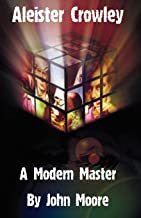
Aleister Crowley, A Modern Master
John S. Moore
Format: Softcover
ISBN:
£15.00/US$22.00
Subjects: Biography/Aleister Crowley/Magick/Thelema/Philosophy.
Click HERE for USA & AUS
Click HERE for UK
–
Aleister Crowley’s appeal on the level of popular culture has been well catered for by a number of biographies that have appeared in recent years, but the more intellectual side to him, which is equally fascinating, has not received so much serious treatment.
Crowley, A Modern Master is neither an account of his life, nor a straightforward presentation of his teaching, but an attempt to place him clearly in the context of modern ideas as well as a number of older traditions.
Extracts
Even, or even especially if you have little interest in the occult, Aleister Crowley deserves your attention. He applied his powerful intellect to engage with some of the most pressing issues of his own day, many of which remain as vital as ever. His Magick, and his Thelema, outlandish as they might at first sound, are not just fringe ideas, they offer provocative answers and solutions to many of the urgent questions that still beset us.
His message is meant for all, as he firmly states in the introduction to Magick in Theory and Practice. He challenged received opinion, which responded by cutting him out of serious history. Untangle his ideas from their bizarre sounding setting, and we can see how unjust was his exclusion. Most importantly, while received opinion has somewhat changed its character over the past sixty years it is still powerfully subverted by the life and work of this badly underrated great man.
My object is to make Crowley intelligible in a mainstream context, to bring his creative achievement more into the light of sympathetic attention, render his ideas more accessible, and his religious outlook and experience available. This involves rewriting much recent intellectual history. The object is also to make excuses for him, defending what has been criticised as the more contemptible side of his character. While my main target audience is people who already know about Crowley and are intrigued enough to want to explore the context of his ideas, I am also writing for anyone interested in modern thought who is curious to discover if I really can make a case for his importance.
The plan for this book was first conceived in 1984 as a contribution to the Fontana Modern Masters series. This was a series of paperbacks about the people who supposedly defined modernity, what is most creative and distinctive in the age in which we live in. I felt strongly that Crowley deserved a place among these assorted gurus. It was annoying, reading much of what was taken so seriously and admired, that the writings of this unique genius should be so completely disregarded. Knowing the prejudice against him I didn’t have any serious hope, but sent off a proposal all the same. I was told Crowley was not a suitable subject for inclusion. ‘From a publishing point of view’, I was told, he was ‘simply too different from the other people we have included as subjects’. This was of course to be expected. Ezra Pound, high priest of modernism, had been adamant there should be no place for the Beast, far preferring Crowley’s nemesis, Mussolini. I meant to show that Crowley is not so out of place in such company as is said.
John S. Moore
REVIEW
‘That John Moore thinks Aleister Crowley is one of the most important thinkers of the twentieth century can be in no doubt after reading what amounts to a 200 pages attempt of a rehabilitation of the great beast.
Moore is the first to admit that his book is a defence of Crowley. ”The object is to make excuses for him”, Moore asserts, ”defending what has been criticized as the more contemptible side of his character.” Moore has no interest in the simple retelling of Crowley’s life and works: pointing out that this has been done many times.Instead he aims to try to put Crowley’s thought, work and behaviour into context. In an attempt to make Crowley ”intelligible”, Moore expends many chapters in highly detailed examination of Crowley’s output. Texts and behaviour are examined in the light of ‘Romanticism’, ‘Protestantism’ and ‘Philosophy’, while what Moore describes as ‘Crowley’s sexual Stalinism’ is given an equally thorough examination.
This is not a book for those with no knowledge of Crowley or his work. John Moore expects that you will have heard of (if not be familiar with) Crowley’s main texts and, after a short but informative description of Crowley’s life, lauches the reader straight into the nitty-gritty.
If you are a devotee of Crowley and can see no wrong in him, or any of his behaviour, you will find this book greatly to your taste. I, for one, however found some of Moore’s rather blithe assertions hard to take. One such was that Crowley’s execrable behaviour towards the women in his life could be glossed over with ”His was an aristocratic path. Sex lives of true aristocrats in all their complexity are not reducible to simple formula for democratic consumption.” I’m afraid that doesn’t quite do it for me. Quibbles aside this is a really thought-provoking take on Crowley as a thinker, ego and possible guru. It highlights his huge creativity and determination to live as he believed he should, no matter the consequences: whether of drug abuse, sexual ‘addiction’, megalomania or accusations of debauchery. Well worth a place in any collection of Crowleyana.’
Pagan Dawn Samhain-Yule 2009
Becoming Magick
New & Revised Magicks for the New Aeon
David Rankine
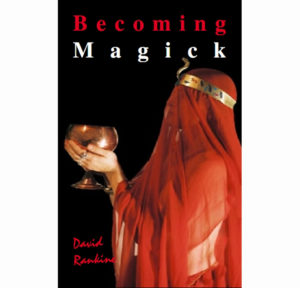
Becoming Magick / UK / £15.00+p&p
Becoming Magick / USA / US $22+P&P
Becoming Magick
New & Revised Magicks for the New Aeon
David Rankine
Format: Softcover
ISBN:
£15.00 /US $22
Subjects: Magick/Occult
–
Drawing on over twenty years of magickal work in a variety of systems, this book is a forward-looking manual full of new material and techniques created to push the boundaries of contemporary magick. Inspired by the great magickal traditions of past millennia, Becoming Magick presents new techniques of sigilisation and gematria, as well as a new system of energy magick based on the lunar Kalas, and prime Qabalah, a new system of English gematria.
REVIEWS
In the acknowledgements to this book David Rankine writes:
‘Ian Read, for being the first person to publish my writings as Jack Dracula in Chaos International.‘It is, therefore, the least we can do to have a gander at Becoming Magick and give you our considered opinion thereon. The system put forward here has something for everyone, all explained in the free and easy way that is one of the few good things about modern literature. The reader is guided through anything and (just about) everything from Maat to Angle and Mantra Webs and from Qabalah to Grant’s take on the Kalas, and it all somehow adds to- gether to make a great whole. There is a fair bit of number working in this book but anyone but the worst idiot (surely not present in the occult world?) should be able to follow this. This book is of particular use to Chaos Magicians because it is formed from ideas and techniques lifted from so many diverse systems. Definitely worth buying.’
– Frank Erpel, Chaos International, 26
‘The author of this new work exploring “magicks for the New Aeon”, is well known on the esoteric scene in Wales and London for his lectures and workshops. He has also been involved with a wide variety of magical groups and he draws on this experience to convey the essence of practical magick in simple terms. The book presents new techniques of visualisation and germatria, as well as a new system of magical working based on lunar symbolism and the Cabbala.’- The Cauldron
‘This book is a wonderful propellant for those who wish to bring that magic with a K into their lives. Having the benefit of knowledge of many systems of magic, from kundalini to kameas and kalas to qabalah, Mr Rankine delivers hard and fast ideas regarding these and a myriad of other subjects…An instructive book, especially for those with pre-knowledge of the author’s chosen subject matter.’- Hyena, Witchcraft & Wicca Magazine, Beltane to Lammas 2005
MORE REVIEWS
‘David Rankine has been practicing magick for 25 years. His book Magick Without Peers was the handbook for his correspondence course on Progressive Witchcraft, a hands on primer. This book continues in the same vein, giving you some further study in some material that Mr. Rankine has developed over and above conventional practices. This book assumes you have some grounding in basic magical practices. It would be a good to have some idea of what the Hebrew alphabet has to do with the Qabalah, and how it works with gematria, or better yet, have an idea of what gematria is. It would also be a good idea to know a little about thought forms, a touch of Magic Squares, advanced mantras, and maybe some basics in the 9 Gates.
From these foundations David Rankine takes us a step further, exposing us to some out of the box thinking on these particular essentials to basic magic practice, and gives us something to ponder and possibly incorporate into our own practices. He also includes some “found” techniques he has devised from his own ponderings and practices, and he explains those rather well. Some topics of interest include The Prime Qabalah, The Kalas, The Mantra of Becoming, Magickal Ingestion, Magick Squares and so much more. There is much to digest here, and I am going to give but a brief overview. The Prime Qabalah is a look at a variation of gematria (Hebrew Numerology) applied to the English alphabet and using the 26 prime numbers. Mr. Rankine has some interesting results, which give one cause for reflection. Well worth checking out.
The Kalas chapter is interesting, being based on the concept given by Kenneth Grant. Mr. Rankine has developed his own 16 Kalas (five elements and eleven Astrological Planets) and gives all the properties and attributions of each. From his explanation of what the Kalas are (cycles of energy), to the explanation of each Kala, he presents us with an extraordinary new working that many will find fascinating. If you work with Kalas, you will want to check this section out. The Mantra of Becoming is a discovery of Mr. Rankine, incorporating a root mantra of Kia with some variations that progress on the magical “ia” and incorporates the next four Hebrew letters: L, M, N, and S. This revelation yields some very interesting analysis from the gematria aspect of the mantra, and Mr. Rankine goes a bit further to show the relationships suggested by the gematria analysis and gives us a very interesting mantra to work with.
Magickal Ingestion I found so basic that I wondered why someone else had not thought of it before. In Egyptian, Heka is magic. It is the spoken word that makes magic manifest. The ancient Egyptians would take a spell, and write it on a piece of papyrus and dissolve it in beer and drink it, imbibing the spell as part of themselves as well as being a working.
Bringing that into the present, writing our working, or sigal, or spell on food, writing our intent on a magical cookie, writing blessings on the cakes for ritual with various methods would be an excellent idea to bring the magic and the magician closer together, as suggested by Mr. Rankine. He gives some ideas, some uses and a whole new insight into “you are what you eat”. Much to ponder here and discover.
Magick Squares are the basis for much of our magical workings, be it talismans or creating sigals for personal work. The squares are based on the astrological information from hundreds of years ago and include Saturn, Jupiter, Mars, Sun, Venus, Mercury and the moon. However, since the discovery of Uranus, Neptune and Pluto, there has been no one who has updated these squares. Mr. Rankine gives us his version of the squares using the Prime Qabalah and also includes Earth, which seems to have been neglected by the astrologers of the past.
Again, more interesting material to ponder over, chew up, and possibly incorporate into our own magical workings. Note that if you do not understand the material discussed here, it is because this book is not a basic primer, and you are not at fault. This can get to be very deep, covering some more advanced material and concepts that knowledgeable practitioners will understand. I found this to be refreshing, and a bit challenging, as there was material here that went beyond my own basic knowledge.
I love a book that can teach me something new, or send me out looking for the basics so I can kick my own working knowledge up a notch. Mr. Rankine did an excellent job of explaining the concepts he is suggesting, and includes illustrations for much of what he discusses, and but for a few places where I had no working knowledge of what he was discussing, I did follow most of what he wrote. And after a bit of backtracking and research, the material I was not familiar with did fall into place.
The mark of a good teacher is his ability to make the unfamiliar understandable, and Mr. Rankine succeeded. If you are looking for new material for your own practice, if you are looking at what other working magicians are doing and are interested in some new concepts and ideas. If you want to challenge yourself with some new aspects to the magickal practices, then this book will definitely give you something to chew on. Again, this is not a magic 101 book, but is intended for those who have gone beyond that. This book is a wondrous look at another man’s discoveries and practices.’
– Boudica, The Wiccan/Pagan Times
—
David Rankine – Magician, Esoteric Author & Researcher and a leading authority on grimoires. davidrankine.wordpress.com

